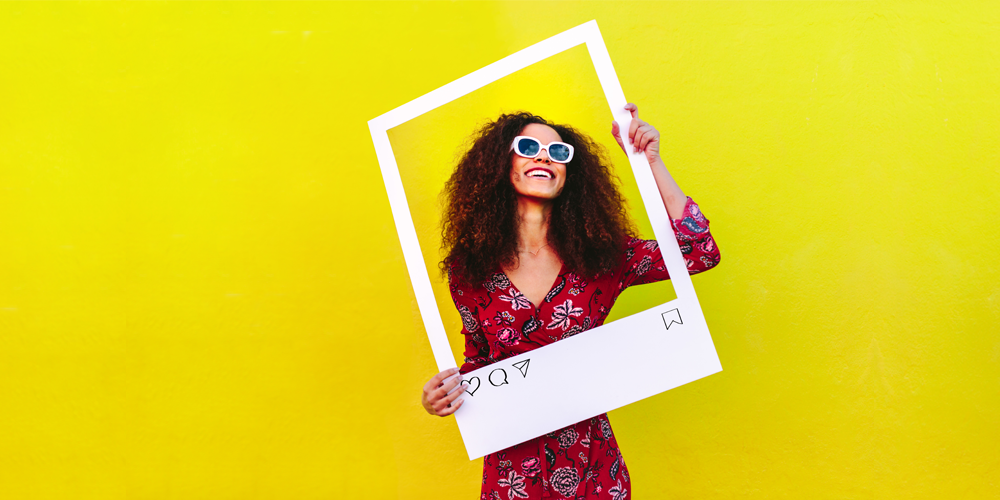Breaking News: Social media continues to be an ever-growing and increasingly unavoidable way of communicating with one another. Just kidding, everyone knows that.
According to a recent survey conducted by researchers Aaron Smith and Monica Anderson, “Some 88% of 18- to 29-year-olds indicate that they use any form of social media. That share falls to 78% among those ages 30 to 49, to 64% among those ages 50 to 64 and to 37% among Americans 65 and older” (Pew Research Center).
This is unsurprising for most of us – it is, however, quite interesting if you look at those percentages and compare them to the percentage of Americans with some sort of disability (according to the CDC, 1 in 4 adults live with a disability).
Do you wonder how people with visual impairments navigate social media, or how people keep up with their favorite YouTube channels when they can’t hear? If you’re on social media and your goal is to reach as many people as possible, those are pretty good questions to ask. Even if you don’t care to become “Instagram Famous”, making sure your posts are accessible is a great way to contribute to creating a more inclusive community. Don’t worry, you don’t have to figure it out on your own. Here are some tips to make your posts accessible:
Test the color contrast of your graphics and messages.
Keep in mind that some people have low vision, and some are color blind. Scholar Carli Spina tells us “accessibility can be improved for all users with color blindness by carefully considering the colors used and how they are applied. All information that is conveyed by color, such as using red and green to indicate yes and no, should also be conveyed in another format, such as pattern or through text. Colors should enhance communication but should not be the exclusive means of conveying an idea.
Similarly, for those with low vision, maximizing color contrast will make content more readable” (Spina p.54). Don’t worry, you can still post your weekly sunrise photos without trying to make all the colors in the image pass the contrast test. That’s what image captions are for. However, if you plan on adding text on top of an image you need to make sure the text is accessible.
Consider using contrasting colors and adding a 1-pixel outline. Your best bet is to download a free color contrast tool, like Color Contrast Analyzer by The Paciello Group [link to free downloadable tool]. Tools like this keep you from worrying if your text is visible in front of that awesome graphic you designed.
Caption your graphics
Most often called alternative text, or alt text. The how-to varies by platform:
Facebook offers automatic alt text by using some algorithm that (as we’ve all seen in recent news) doesn’t always get it right. If you want to ensure the graphic you spent hours perfecting is captioned correctly, instead of as a “basic image”, edit the alt text [link to Facebook’s How to edit the alt text for a photo].
LinkedIn also allows you to add alt text. Like Facebook, this is a new development and was not really broadcasted, so not many people know. Spread the word! Here’s how you add alt text to your LinkedIn images [link to a blog with step-by-step instructions on how to add alt Text to LinkedIn images]. Disclaimer: The shared external link has some accessibility issues, but they do a great job using alt text for their images.
Twitter makes adding alt text to images easy and pain-free. Here’s how [link to twitter help center: How to make images accessible for people].
Instagram offers automatic alt text just like Facebook. Personally, I don’t trust that. Editing the alt text ensures your images is captioned exactly how you want it. Here’s how to edit the alt text on Instagram [link to Instagram help center].
Use Camel Case
For most social sites, hashtags are so important. They increase engagement and help build your brand. We all know what a hashtag looks like: #artistsoninstagram but have you used a screen reader to listen to one? They tend to be unintelligible. That’s why using camel case is so important: #ArtistsOnInstagram is much easier to understand. It’s a simple change that makes a big difference.
Whether you aim to take the digital world by storm, or you want to make a difference and help create a more inclusive world, these tips will see you there. Contact one of our friendly and knowledgeable team members to get information on making sure all our online assets are accessible. Social Media is only getting more pervasive. It’s a big part of our culture and it needs to be accessible to all.
References
Smith, Aaron, et al. “Social Media Use 2018: Demographics and Statistics.” Pew Research Center:
Internet, Science & Tech, Pew Research Center: Internet, Science & Tech, 14 Apr. 2019,
www.pewinternet.org/2018/03/01/social-media-use-in-2018/.
Carli Spina. “Developing an Accessible and Inclusive Social Media Presence.” Marketing Libraries Journal,
- 53. 1, 2018, p. 53. EBSCOhost, search.ebscohost.com
